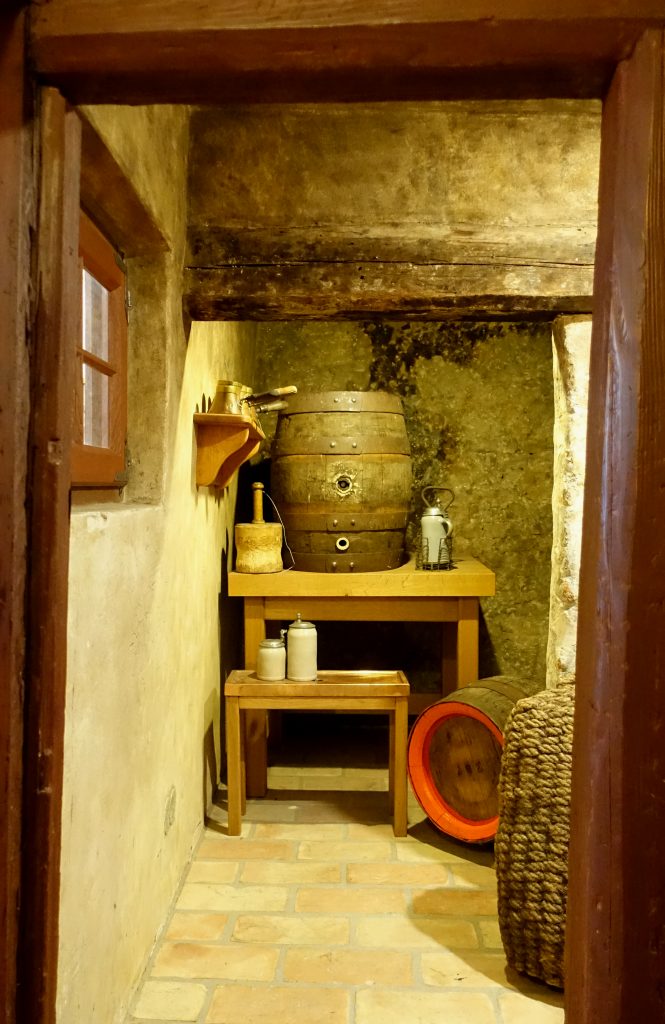As mentioned, before the two days in Obertrum I begun my trip a week earlier in München, beer capital of the world for sure! Famous for Oktoberfest, but a city that offers so much more.
We were only here for a day and a half, so it became a sprint from beer related place to beer related place and I hope to visit München in the future pretty soon to see everything else. Especially since I was not as healthy before and during this trip as hoped, so we made quite a strict schedule of walking, resting/sleeping, walking, resting, which was still heavy, but made it manageable and enjoyable as well.
München has six breweries that are allowed on Oktoberfest: Paulaner, Hofbräu, Hacker-Pschorr, Augustiner, Löwenbräu and Spaten and we visited one or two venues of four of them. We also visited the Theresienwiese, but that’s basically a wasteland with a giant Bavaria statue in between events. Did you know the Oktoberfest started with horse races as a celebration when Crown Prince Ludwig married Princess Therese of Saxony-Hildburghausen on October 12, 1810?
The first visit we made was to Zum Augustiner in the Neuhauser Straße. This was a huge challenge for me because one of the side effects I had from the surgery is a very low blood pressure and the temperature difference between outside and inside is enough to make you collapse even when you’re healthy. But some discarded layers of clothing later I could even enjoy this gorgeous and huge venue.
We planned on getting to know some important German beer styles better, so we ordered a Helles and a Dunkles. Before the vacation I would never have imagined I would be able to recognize all those different lager beers by smell and taste, but helles really is very different from say pilsner. It’s much less bitter and has a more malty taste like bread. Most classical German beerstyles are quite malty, especially in the Bavarian region. I find this very interesting, because the Bavarian Hallertau region must be the biggest hops region in the world and hops are known to be bitter for one. Also historically the Germans were the first to use hops, but they don’t like bitter all that much at all. Although thinking about it, the Bavarians mostly use aromahops, and then it’s actually quite logical, because -especially – aromahops are much less bitter than the gale that was the main ingredient of gruit that was used before hops were discovered and used. But I’m wandering again, I’ll get back to the subjects of hops and gruit later.
Other venues we visited were Schneider Weißes Bräuhaus for a weißwurst breakfast, because German beer culture dictates you can’t eat those after 12, Spatenhaus an der Oper, Paulaner Bräuhaus and the somewhat mandatory Hofbräuhaus. We didn’t stay in the overcrowded Schwemme in the Hofbräuhaus though, but went straight to the Festival Hall, which was closed, so a bit less straight to the much quieter Bräustüberl. There we ordered two maß, again a Helles and a Dunkel, to practice for the Schneider Starkbierfest that would take place after the exams, about which I’ll tell you later. We tried to go to the Augustiner-Keller, but a queue of over an hour convinced us to look for another venue to eat. It’s probably better to visit that in summer anyway, because now only a small part inside was open, in contrary to the huge by chestnut trees shadowed biergarten that’s available on warmer days.
Next to the practicum part we also tried to enhance our theoretical knowledge further by visiting the Bier- and Oktoberfestmuseum. A very quirky and interesting museum with a lot of information and yet not so much. There was a lot there, but it missed cohesion. Nonetheless, with some background knowledge all the seperate pieces could be puzzled together a little bit. For example there was some information about Therese Wagner from Augustinerbräu and then some about Gabriel Sedlmayr junior from Spatenbräu who – together with Anton Dreher – was a main figure in the development of lager beers and pale beers. They invented a cooling system for one that made it possible to ferment and lager in cold conditions and so laid the base for lager beers.
It’s generally teached to beer students that Pilzn (Czech) was the birth ground of lager beers/bottom-fermented beers. Interesting to note that Kiesbye and Doemens use the adventures of Anton Dreher and Sedlmayr to prove that it was actually Austria with the Vienna lager to be the first to brew a lager beer, a year before pilsner.
Which truth do you adhere?

































